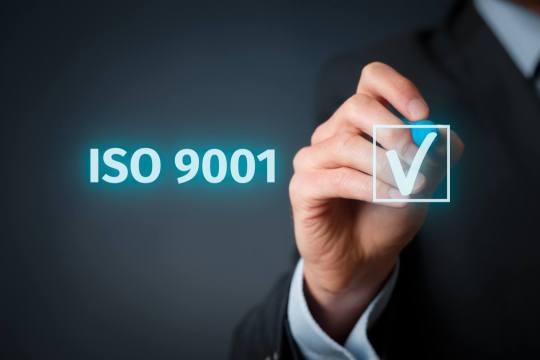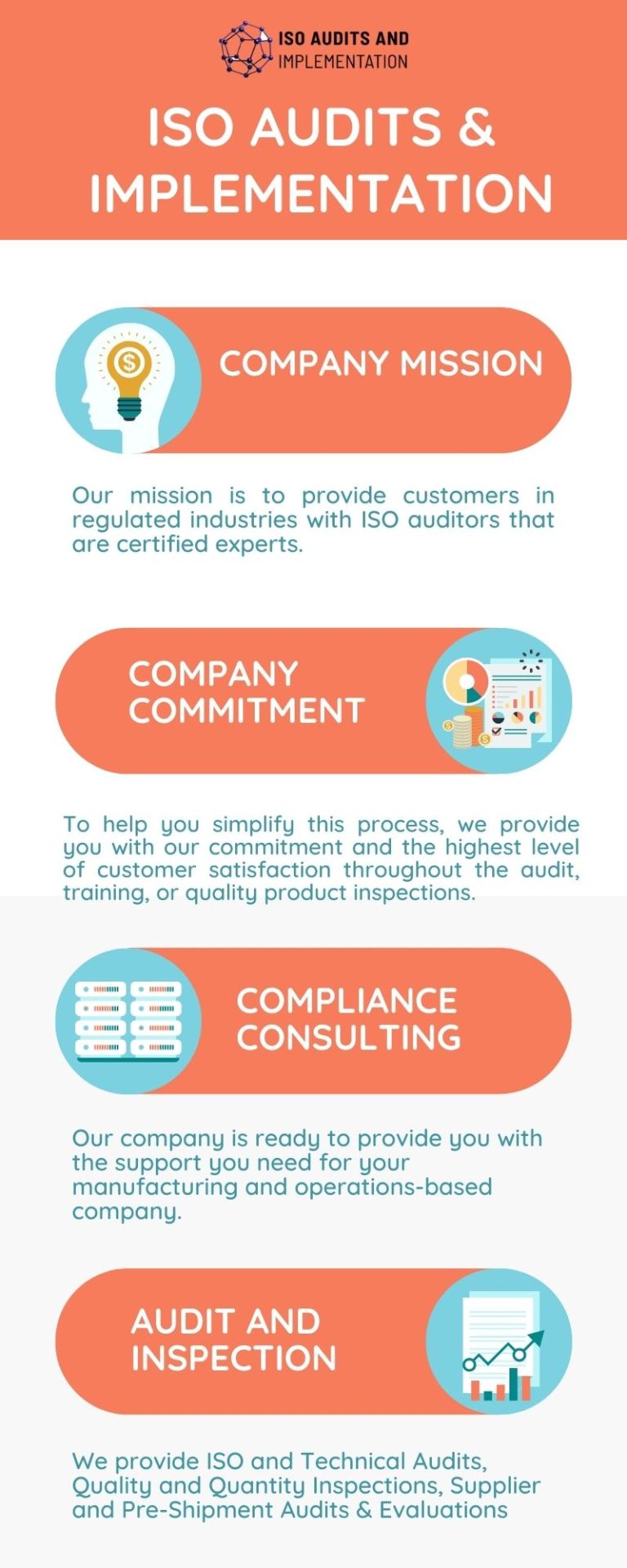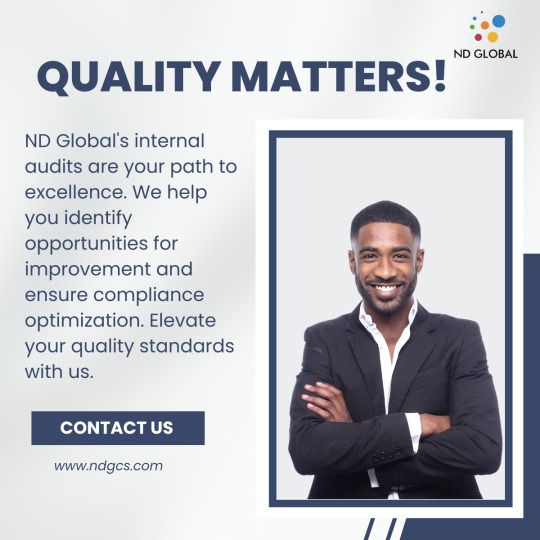#quality management systems iso
Text
Why Should Your Business Implement Iso Quality Management Systems?
Good quality management systems iso are the foundation of any successful business. The ISO 9001 standard was created to ensure that every organization operates in a way that ensures the safety of its customers and employees, as well as their satisfaction with the products and services they receive.
Improved Business Efficiency
One of the biggest benefits of implementing ISO 9001 is the ability to improve business efficiency. This can be done through the elimination of waste and rework, which will lead to better efficiency and productivity in your organization. In addition, it will also allow you to deliver better customer service by ensuring that all processes are clearly defined, as well as identifying opportunities for improvement within each process.

Enhanced Customer Satisfaction
With a focus on quality, you can expect to see a number of benefits to your business. For starters, customers will be more likely to return to your company and buy from you again in the future. This is because high-quality products and services are less likely than low-quality ones to break down or malfunction within a short period of time.
The result? Your customers will not only enjoy using their new purchase but also feel confident that it won't let them down when they need it most (like during an emergency).
Additionally, because many people follow crowds when making purchasing decisions, having an ISO 9001 certification could help attract more customers through word-of-mouth advertising especially if someone who has used one of your products recommends it highly enough that others want what they have!
Better Risk Management
A quality management system should include risk management. This is because it's part of the ISO 9001 standard, but also because it will help your business in many ways. Risk management helps with customer satisfaction, business efficiency, and financial stability.
Risks are often overlooked by businesses because they don't see them as important enough to address until something goes wrong. However, if you can identify and assess risks early on then you can take preventative measures to avoid issues before they arise - saving time, money, and energy!
Compliance with Industry Standards
You may be wondering why it's necessary to implement a quality management system. The answer is simple: compliance with industry standards. Quality management systems iso are a set of processes that are designed to ensure the quality of a product or service. ISO standards, in particular, are used by many industries to ensure quality.
ISO standards help to improve business efficiency and customer satisfaction by providing guidance on how you can create a system that works best for your organization.
Businesses cannot afford not to have an effective system in place because this will lead them down the path of losing customers due to poor customer service or low-quality products/services being offered on the market today!
Conclusion
If you're ready to start implementing ISO quality management systems iso in your business, it's important that you do so with a plan in mind. You don't want to just jump into things without knowing where they will lead or what results they'll produce.
That being said, if all goes well then there will be some serious benefits for both your customers and employees!
0 notes
Text
A Comparison Of ISO 9001 And Quality Management System
4 notes
·
View notes
Photo

ISO Audits And Implementation company is a leader in ISO Implementation, ISO Quality Management System Certification, Third-party Audits, ISO Training, ISO Consulting, and Third-party Quality product inspection services. Our quality service has several attributes. For example, we apply customer focus and continual improvement in all tasks.
2 notes
·
View notes
Text
Enhance your business with expert ISO consulting services. We specialize in implementing Quality Management Systems (QMS), Occupational Health & Safety (OHSMS), Environmental Management (EMS), and Food Safety Management Systems (FSMS). Achieve certification, improve compliance, and optimize your operations for long-term success.
0 notes
Text

Discover high-quality stainless steel plates, including hot rolled options and various steel plate thicknesses. Explore our range of stainless steel products and find the right fit for your project at Jindal Stainless.
#Iso-Certification-In-Jaipur#Iso-Quality-Certification#Iso-And-Quality-Management#Iso-9001-Quality-Management-System#Quality-Management-System-Certification
0 notes
Text
ISO Quality Certification

ISO Quality Certification
0 notes
Text

ISO Standards
Elevate your business with strategic insights and innovative solutions tailored to drive growth, efficiency, and success, partnered with our dedicated ISO consulting and ISO certification expertise.
#iso consulting#iso certification services#iso 270001 certification#medical device quality management system#iso 22000 certification#iso 45001 certification
0 notes
Text
ISO 13485 Certification | Managing Quality Standards in the Medical Device Sector

In a world where access to medical services is among the most important elements of a happy and healthy life worldwide, it becomes essential to meet quality standards and regulatory requirements for the equipment used in medical analysis.
One standard in charge of monitoring the quality standards throughout a medical device's life cycle (from manufacture to servicing) is ISO 13485. The ISO 13485 Certification was modeled after the ISO 9001 Certification but placed greater emphasis on the medical device quality management system.
Importance of ISO 13485 Certification for Medical Devices
For quality control and legal compliance in the medical device industry, ISO 13485 is essential. Businesses that follow this guideline can enhance product quality, lower risks, and obtain a competitive edge in the international market. As ISO 13485 certification holds paramount importance for the medical device industry, here are several key reasons:
ISO standard 13485 plays an important role in the manufacturing, distribution, and performance of medical devices.
ISO 13485:2016 certification reflects on the safety standard of the product throughout the production procedures to ensure that the devices are safe to use.
The standard provides guidelines and frameworks to enhance the effectiveness of the product so that the device can result in foremost accuracy.
The QMS requirements help in maintaining the user expectations which helps in meeting the quality needs of the users with less chance of defects or technical failures.
Challenges in Implementing ISO 13485:2016 Certification
In UAE, organizations generally face a few difficulties when implementing ISO 13485 certification. Despite the substantial advantages of ISO 13485 certification, organizations may run into challenges while putting it into practice. Here are the core obstacles:
Insufficient Understanding: ISO 13485 standard can be difficult to understand without any help from a consultancy or an assistant. The requirements and guidelines needed for implementing the standard should be correctly comprehended by the organizations in the UAE
Resources Issue: Achieving the ISO 13485 certificate in UAE demands a notable amount of investment in money, time, and effort. Organizations that are smaller in size may find it challenging to maintain the resources needed for implementing ISO 13485 Certification in Dubai, Oman, and Saudi Arabia.
Changes & Continuous Improvement: Implementing ISO 13485:2016 often requires changes in the procedures and continued improvement for better performance. To effectively follow the upgradation and changes can be challenging for employees resulting in delayed or discontinuation of the certification
Resource Constraints: Implementing ISO 13485 requires the allocation of resources, including financial, human, and technological resources, which may pose challenges for some organizations, particularly small and medium-sized enterprises (SMEs).
Regulatory Complexity: The medical device industry is subject to stringent regulatory requirements that vary across different markets. Navigating this regulatory complexity and ensuring compliance with diverse regulatory frameworks can be challenging for organizations operating internationally.
Cultural Resistance to Change: Implementing ISO 13485 often necessitates organizational changes, including changes to processes, procedures, and organizational culture. Overcoming cultural resistance to change and fostering employee buy-in is essential for successful implementation.
Early planning, leadership commitment, employee involvement, and a methodical execution technique are all necessary to overcome these challenges. Organizations can demonstrate their commitment to producing safe and effective medical devices, enhance their quality management systems, and obtain ISO 13485 certification by tackling these obstacles.
Conclusion
ISO 13485 is essential for achieving quality management and regulatory compliance in the medical device business. By conforming to this standard, businesses can improve product quality, reduce risks, and gain a competitive advantage in the global economy. ISO 13485 certification represents a dedication to quality and customer satisfaction, which strengthens trust and confidence in medical equipment and, ultimately, contributes to better patient outcomes and public health.
#ISO 13485 Certification in UAE#ISO 13485 Certification in Dubai#ISO 13485 Quality Management System
0 notes
Text
Implementing and Managing an ISO 13485 QMS for Medical Device Companies

Implementing and managing an ISO 13485 Quality Management System (QMS) is vital for medical device organizations intending to meet regulatory requirements and guarantee product quality and security. ISO 13485:2016, the global standard for medical device quality management systems, gives an extensive structure to laying out and keeping up with processes that meet both customer and regulatory necessities.
This standard underscores the significance of a risk-based way to deal with quality management, ensuring that all parts of the ISO 13485 QMS in UAE are planned and made do with an emphasis on reducing risks related to medical devices.
A very much implemented QMS lines up with the essential objectives of the organization, working with nonstop improvement and cultivating a culture of value across all levels of the association. It includes step-by-step documentation of cycles, roles, obligations, and tools, guaranteeing consistency and responsibility. From design and improvement to manufacturing and post-market activities, a viable QMS covers all phases of the medical device lifecycle.
What is a Quality Management System?
A quality management system is characterized as:
“A conventional system that records the construction, processes, jobs, obligations, and tools expected to accomplish compelling quality management.”
A QMS contains the center plan of business strategies, techniques, structures, and work guidelines, alongside their grouping, cooperation, and resources expected to lead business inside a medical device organization. Quality records are documentation that exhibits the QMS is being implemented and followed.
QMS Hierarchy
To line up with ISO 13485:2016, the products in the QMS ought to address the particular, relevant requirements of the standard, as well as the particular, appropriate regulatory requirements in light of business sectors where you intend to manufacture and advertise medical devices.
One idea officially presented in the 2016 standard is the thought of a risk-based QMS. All through this aid, I will return to and underline what “risk-based” signifies and how it applies to the different parts of a QMS.
Assuming you decide to reevaluate any process that influences the ISO 13485 Requirements (for instance, contract manufacturing), it is your responsibility to screen and guarantee controls over the rethought processes. This concerns for characterizing roles and responsibilities regarding recorded quality concurrences with any re-appropriating assets.
A significant best practice for managing a QMS is to consistently screen its viability and guarantee that the QMS is changed as required. One means to do so is to lay out key implementation pointers for the cycles inside the QMS.
ISO 13485 Documentation Requirements
Indeed, documentation of QMS processes, quality occasions, and work processes is fundamentally significant. At times, the idea of documentation can create tension inside an organization. Sometime, the possibility of documentation is considered to be excessively difficult and regularly pointless with little worth added.
I would say, most organizations truly do make many heavy and deterrents in regard to documentation. Also, it doesn't need to be like this.
Documentation ought to be tied in with characterizing processes and keeping up with the records expected to exhibit these cycles are being followed. Documentation is key for genuine evidence. Objective proof to help your employee through plan, improvement, manufacturing, and backing of medical devices. Objective proof to show that these requirements are being tended to.
Laying out intensive, yet useful, reports management practices for your business is one of the most significant fundamental components of a QMS.
Quality Manual
A vital piece of your Quality Management System for Medical Devices is your quality manual.
The common methodology for fulfilling the rules of ISO 13485:2016 for a quality manual is making an extensive strategy-level report that separates different segments of the standard and portrays a general how the medical device organization tends to the clauses. This approach is fine.
Your quality manual should meet the following rules:
Portray the scope of your QMS. Incorporate any conditions that are avoided or non-applications upheld with support
Checklists or reference of the methodology, including the QMS
Portray collaborations of QMS processes
Frame the design of QMS documentation
Medical Device Document
Each medical device type or device family should have a medical device record.
ISO 13485 requires the items in a medical device document to include:
Portrayal of the product, including planned use and signs for use
Product label and guidelines for use
Particulars for the item
Particulars and tools for manufacturing, analyzing, labeling, packaging, capacity, managing with, and dispersion
Particulars for estimating and checking
Particulars and techniques for product establishment
Techniques for item overhauling
Document Control
Documentation is an essential part of a QMS.
A report control methodology will characterize your organization's models for document control. This incorporates guaranteeing archives are evaluated and supported preceding implementation, means to modify documents to recognize changes, and ensure current adaptations are accessible at the mark of purpose.
Control of Records
Records require comparable controls as documents. Furthermore, once in a while, the differentiation between a document and a record can be a piece.
Records are proof that specific cycles have been followed. All through this aide, there are extra notes connected with records.
Similar sort of measures is material with respect to audit and endorsement. Records, nonetheless, are normally not formed.
Management Review
There are many organizations where the workers embrace a genuine quality outlook that is not upheld by leaders' management.
Leader management establishes the vibe regarding your organization's vision and the significance of quality. For a QMS to be compelling, the chief management inside a medical device organization wants to trust in its significance. Both Deming and Juran accentuated this.
“Management' responsibility is to know which systems are steady and which are not.” - Deming
“Top management should be quality-disapproved. Without a trace of earnest sign of revenue at the top, little will occur beneath.” - Juran
Quality Management System Planning
Planning is a significant component of ensuring a QMS is compelling. Furthermore, regardless of whether you as of now have a QMS that is carried out, evaluated, and certified, there are advantages to starting QMS arranging endeavors.
QMS arranging ought to integrate the recognizable proof of key quality goals for the organization. Consider quality targets like objectives; these ought to be level-headed and quantifiable. Also, quality targets ought to move from your quality approach.
Guidelines develop, your organization presents new items, new business sectors are added, processes change, items change, etc. All motivations to embrace the possibility of QMS arranging with characterized quality targets.
Conclusion: All in all, the journey of implementing and managing an ISO 13485 QMS in UAE is a continuous cycle that requests commitment, cautiousness, and a proactive way to deal with quality management. By sticking to the standards and requirements of ISO 13485, medical device organizations can guarantee they deliver, protected, compelling, and good items to the market, hence getting their stand as pioneers in the medical healthcare industry.
0 notes
Text
How To Make Medical Device Quality Management System?
It is difficult to run a medical business without understanding the concept of a medical device quality management system. The International Organization for Standardization has set a framework for medical device manufacturers. They provide ISO 13485 certification to educate business organizations about their framework and its advantages.
Visit us - https://iso-standards.com/how-to-make-medical-device-quality-management-system/
#ISO Certification in USA#medical device quality management system#iso 13485 medical devices#iso 13485 requirements#iso 14001 certification#iso 14001 environmental management system#iso 14001 2015 standard
1 note
·
View note
Text
Exploring the Importance of ISO 13485 Certification in the Medical Device Industry

In the domain of healthcare services, the creation of medical devices requires severe quality guidelines to guarantee the safety and adequacy of these items. ISO 13485 certification remains as a foundation in the medical gadget industry, framing the requirements for a thorough quality management system.
This article digs into the meaning of ISO 13485 Certification, explaining its role in maintaining quality, compliance, and patient safety inside the area.
What is ISO 13485 Certification?
Inside the ISO 13485 standard areas and provisions exist that address the parts of the plan, advancement, creation, audit, testing, bundling, marking, establishment, overhauling, fixing, maintain, removal, and documentation of medical devices. The reason for the ISO 13485 standard is to assist makers with creating protected, solid, and compelling medical devices.
How does ISO 13485 Certification in Dubai help medical device manufacturers?
By observing the rules in this standard, producers can:
Guarantee products are manufactured by industry-acknowledged accepted procedures.
Lessen the risk of item reviews because of imperfections or breaking down parts.
Avoid expensive claims from patients harmed by faulty equipment.
Work on quiet results.
Increment in customer satisfaction.
Meet unofficial laws.
Keep a decent corporate picture
Regulatory Compliance:
ISO 13485 fills in as a globally perceived standard explicitly custom fitted for medical gadget producers. Compliance with ISO 13485 shows adherence to administrative prerequisites across different wards, including the European Union's Medical Device Regulation (MDR), the U.S. Food and Drug Administration (FDA) guidelines, and other worldwide regulatory systems.
By lining up with ISO 13485, organizations can explore complex regulatory scenes all the more actually, guaranteeing market access for their items.
Why Is an ISO 13485 Certification Important for Medical Devices?
To sell your items in different nations, then you should be consistent with nearby regulations and guidelines. For instance, most European nations require medical gadget makers to acquire CE marking before they can advertise their products in those areas.
Furthermore, many states require medical gadget makers to enroll their items with state facilities. Consequently, having an ISO 13485 accreditation can assist you with remaining on the ball while showcasing your items around the world.
What happens when you don't have an ISO 13485 certification?
Without an ISO 13485 accreditation, you will not have the option to trade your item product beyond the US. Furthermore, the FDA expects that all medical devices sold in the U.S. deliver an ISO 13485 certificate.
Enhanced Quality Management:
Integral, the certification is the foundation of a hearty ISO 13485 Quality Management System (QMS) customized to the extraordinary necessities of the medical gadget industry. The standard system requirements, for example, plan control, risk management, restorative and preventive activities (CAPA), and recognizability, cultivate a culture of constant improvement and item excellence.
Executing an ISO 13485-certified QMS empowers organizations to smooth out activities, limit threats, and reliably deliver superior-grade, safe medical devices to end customers.
Focus on Risk Management:
ISO 13485 Certification puts major areas of strength for on-risk management all through the item lifecycle. By incorporating risk-based approaches into configuration, assembling, and post-market exercises, associations can proactively distinguish and alleviate potential perils related to their medical devices. This proactive position upgrades item security as well as supports regulatory compliance and encourages partner trust.
Worldwide Market Access:
ISO 13485 certificate fills in as an identification to global business sectors, working with exchange and market acknowledgment of medical devices around the world. Numerous nations and locales require the ISO 13485 standard as an essential for item enrollment or market passage, highlighting its significance in worldwide market access techniques.
By acquiring an ISO 13485 certificate, producers show their obligation to quality and regulatory compliance, consequently upgrading their seriousness in the worldwide commercial center.
Customer Confidence and Reputation:
ISO 13485 certificate ingrains certainty among clients, medical services experts, and regulatory specialists the same. It fills in as a substantial show of an organization's obligation to item quality, security, and administrative compliance. Moreover, the ISO 13485 QMS improves the branding and validity of medical gadget makers, cultivating trust and dedication among partners.
Why Should My Organization Care About ISO 13485 Certification?
Producing medical devices implies a great deal of threats. You might confront issues like:
Product reviews in light of an imperfection or failing part
Claims from patients harmed by damaged parts
Loss of business or income due to unfortunate client care
Inflated costs related to product reviews
Inflated costs related to getting an ISO 13485 accreditation
These dangers can hurt your reputation, your business, and your primary concern.
Note: Minor deviations from the standard are ordinarily rare. Most of the time, these can be immediately found and fixed, despite the fact that they seldom quickly affect the eventual outcome. Minor non-conformance can include single issues like the beginning and stop runs of plastic infusion molding machines or errors in machine calibration.
This sort of resistance is brought about by a one-time setting source, and it probably won't endure during the large-scale manufacturing of a product. Yet, on the grounds that this sort of non-conformity is seen as “minor” doesn't infer it ought to be dismissed. Minor infractions often heighten to larger ones.
Conclusion:
All in all, ISO 13485 Certification holds an essential part in the medical device industry, filling in as a foundation for quality management, regulatory compliance, and market achievement. By embracing ISO 13485 principles, associations can lift their quality systems, relieve dangers, and improve their competition in the worldwide commercial center.
As healthcare services keep on advancing, ISO 13485 stays fundamental for guaranteeing the security, viability, and reliability of medical devices, at last helping patients and medical care suppliers around the world.
#ISO 13485 Certification#ISO 13485 Certification in Dubai#ISO 13485 Quality Management System#ISO 13485 QMS
0 notes
Text
#ISO 13485 Certification in UAE#ISO 13485 Certification in Dubai#ISO 13485 Quality Management System
0 notes
Text
AI Powered Marketing

Welcome to QM Consultants, your strategic partner in driving digital success! We are experts in harnessing the extensive powers of AI to deliver you a range of marketing, product, sales, and email Campaign related services. Our services would make every campaign of yours cost and time efficient. As a business owner or senior manager, you understand the importance of a robust online presence and effective digital strategies. Our suite of services is tailored to catapult your brand to new heights, encompassing digital brand building, product development, and campaign management.
https://isoconsultants-me.com/
#QM Consultants#Iso Certification In UAE#ISO Consultancy Services#ISO Certification Consultancy#iso certification#iso certified certificate#iso 9001#iso certified companies#iso accreditation#iso 27001#iso 45001#iso approved#iso quality certification#iso quality management system#iso 9001 certification#iso 14001
0 notes
Text

Get insights into Jindal Stainless’s ISO certification in Jaipur and our advanced quality management systems. Explore how we ensure exceptional quality and industry-leading standards.
#Iso-9001-Quality-Management-System#Iso-Quality-Certification#Quality-Management-System-Certification#Iso-And-Quality-Management#Iso-Certification-In-Jaipur
0 notes
Text
ISO 17025

0 notes
Text
A Quick Glimpse on ISO 13485:2016
In the complex world of quality management systems (QMS), ISO 13485:2016 stands out as a guiding light. If you're new to the term or have heard it in passing, you might wonder what it's all about. No worries, we're here to break it down in a way that even a newbie can grasp. So, are you ready?

Understanding ISO 13485:2016
Imagine you're running a business where precision and safety are paramount – a medical device manufacturer, for example. ISO 13485:2016 is your golden ticket to excellence. This international standard spells out the requirements for a Quality Management System (QMS) tailored to the medical device industry.
But what's a Quality Management System, you ask? It's essentially a set of practices and procedures designed to ensure that your products consistently meet regulatory and customer requirements while maintaining the highest level of quality. Think of it as your compass for quality control.
It is like a trusted consultant that provides a roadmap to establishing and maintaining an effective QMS. It covers a spectrum of aspects, from management commitment to resource management and product realization.
Why ISO 13485:2016 Matters?
For any business dealing with medical devices, ISO 13485:2016 is non-negotiable. It's a seal of approval that assures your customers, regulators, and partners that your products are produced and managed in a way that prioritizes safety and quality.
Now, you may be wondering how to navigate this intricate landscape. That's where ISO 13485:2016 consultant services come into play. These experts are like seasoned guides in the world of QMS. They help you decipher the standard's requirements and implement them in a way that's tailored to your business.

If you're thinking about pursuing ISO 13485 certification services, know that it's a significant step towards success in the medical device industry. It's not just a badge; it's a testament to your commitment to quality and safety.
For an in-depth exploration of ISO 13485:2016 and the steps to certification, check out this comprehensive guide. It's a treasure trove of knowledge that will demystify the process and put you on the path to success.
The Bottom Line
ISO 13485:2016 is a cornerstone in the world of medical devices, ensuring that businesses meet the highest standards of quality and safety. And, the good thing is it's not a journey you have to take alone. With ISO 13485 consultant services, you can have a trusted partner to guide you through the process.

Remember, this certification isn't just a bunch of rules; it's a framework that empowers you to provide the best quality and safety in your industry. It's not about meeting a checklist; it's about surpassing expectations and earning the trust of your customers.
Stay tuned for more insights on ISO 13485:2016 and how it can elevate your business in the ever-competitive medical device industry. Remember, success in quality management is a journey, and ISO 13485:2016 is your road map.
#medical devices#ISO 13485 Consultant#quality management system#Quality Registration Audit Services#ISO 13485 consultant services#ISO 13485:2016
0 notes